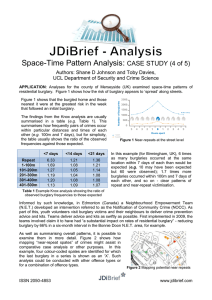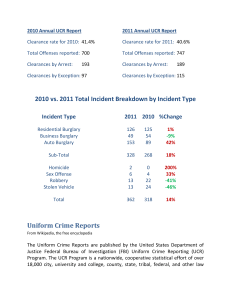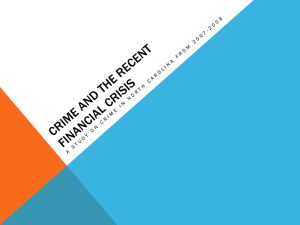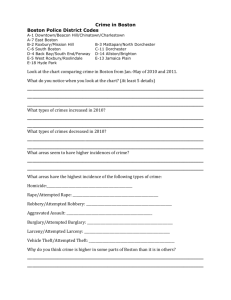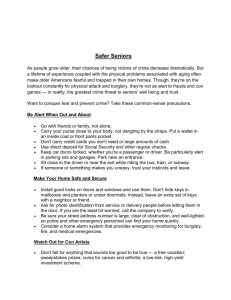Burglary - Visual Armor
advertisement
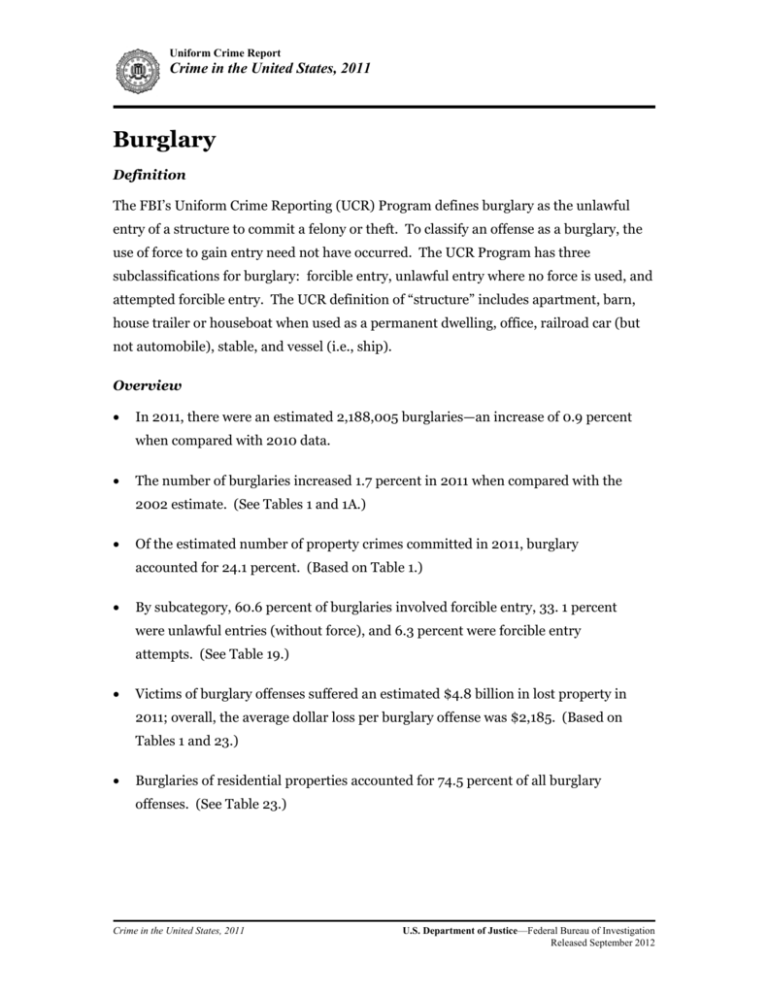
Uniform Crime Report Crime in the United States, 2011 Burglary Definition The FBI’s Uniform Crime Reporting (UCR) Program defines burglary as the unlawful entry of a structure to commit a felony or theft. To classify an offense as a burglary, the use of force to gain entry need not have occurred. The UCR Program has three subclassifications for burglary: forcible entry, unlawful entry where no force is used, and attempted forcible entry. The UCR definition of “structure” includes apartment, barn, house trailer or houseboat when used as a permanent dwelling, office, railroad car (but not automobile), stable, and vessel (i.e., ship). Overview • In 2011, there were an estimated 2,188,005 burglaries—an increase of 0.9 percent when compared with 2010 data. • The number of burglaries increased 1.7 percent in 2011 when compared with the 2002 estimate. (See Tables 1 and 1A.) • Of the estimated number of property crimes committed in 2011, burglary accounted for 24.1 percent. (Based on Table 1.) • By subcategory, 60.6 percent of burglaries involved forcible entry, 33. 1 percent were unlawful entries (without force), and 6.3 percent were forcible entry attempts. (See Table 19.) • Victims of burglary offenses suffered an estimated $4.8 billion in lost property in 2011; overall, the average dollar loss per burglary offense was $2,185. (Based on Tables 1 and 23.) • Burglaries of residential properties accounted for 74.5 percent of all burglary offenses. (See Table 23.) Crime in the United States, 2011 U.S. Department of Justice—Federal Bureau of Investigation Released September 2012 Expanded burglary data Expanded offense data are the details of the various offenses that the UCR Program collects beyond the count of how many crimes law enforcement agencies report. These details may include the type of weapon used in a crime, type or value of items stolen, and so forth. In addition, expanded data include trends (for example, 2-year comparisons) and rates per 100,000 inhabitants. Expanded information regarding burglary is available in the following tables: Trends (2-year): Tables 12, 13, 14, and 15 Rates (per 100,000 inhabitants): Tables 16, 17, 18, and 19 Offense Analysis: Table 23 What you won’t find on this page • Larceny-theft and robbery data. • Clearance and arrest data for burglary. Crime in the United States, 2011 U.S. Department of Justice—Federal Bureau of Investigation Released September 2012 2
